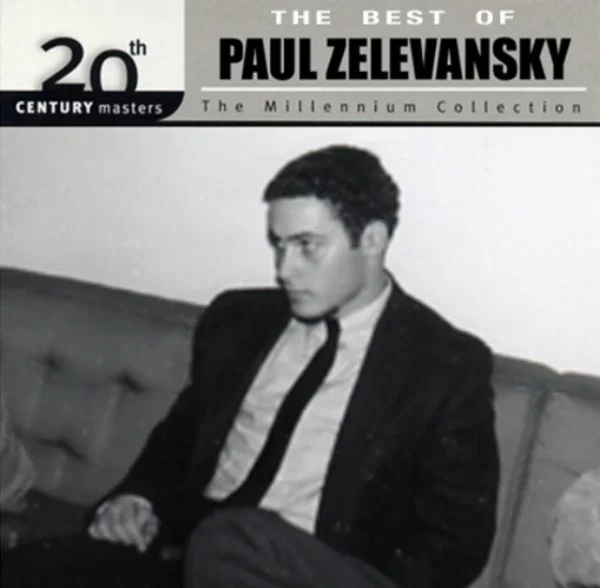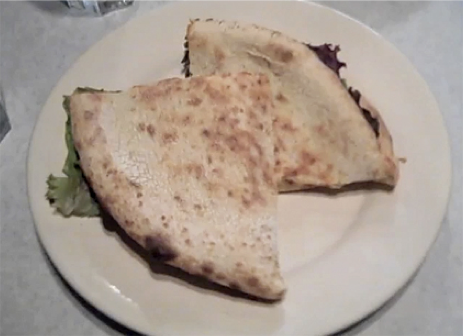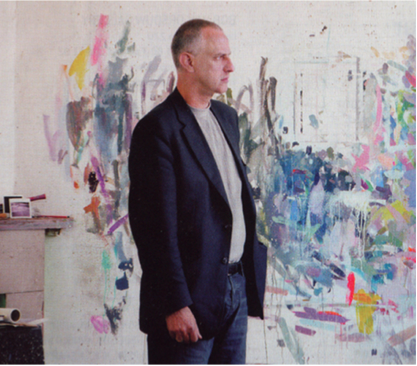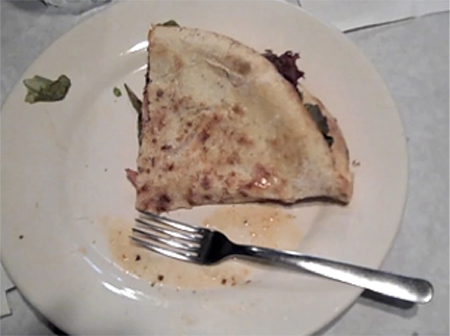WHEN IS A SANDWICH LIKE A WORK OF ART?
“In art, the hand can never execute anything higher than the heart can inspire.” (Ralph Waldo Emerson)
“Abundant suggestions are at hand for guidance in the task of patronizing American art. Here is one: Study your tea cups. The drinking vessel of every-day use is an object on which those endowed with the creative art faculty have spent time, care, labor and high skill for many thousands of years. It has taken a million forms and been adorned in a million ways…”
(Charles Cotton Dana, “American Art: How It Can Be Made to Flourish,” 1929)
In Pittsburgh’s Strip District, since the early 20th century the center of food wholesaling and distribution in the city, there is a small restaurant adjacent to Enrico’s Bakery which specializes in biscotti and macaroons. The entrance to Enrico’s restaurant is at the end of a short alley. The room is small and worn with perhaps 20 tables arrayed next to a high counter overhung with a cast iron rack for pots and pans. Enrico’s is only open for lunch, and has a limited daily menu built around what they buy from neighborhood vendors. An everyday option is the “Original Sangaweech” which is made of spicy cappicola, salami, ham, arugula or some kind of field green, mozzarella, and olive oil on their house-made pizza bread. The Sangaweech is to my taste a perfect version of what is proposed by its individual ingredients in collaboration with each other and the wood-fired pizza oven. The pizza bread is hot and chewy and holds its own texture-wise against the smoked meats, and the viscosity of the melted cheese and olive oil. While it helps to have the luxury of a leisurely lunch, biting into a Sangaweech, while reading a newspaper, with the promise of a strong espresso at the end of the meal, fills me with gratitude for the simple pleasures of life.
Luc Tuymans
In a full-page ad in ArtForum magazine for a 2010 Dallas Museum of Art exhibition by Luc Tuymans, the artist is pictured standing in a corner of his studio facing right towards the daylight glow of a double window. He is surrounded by the tools of his trade–the equivalent of Enrico’s pots and pans: a tangled pile of squeezed paint tubes, stacks of paper palettes with intensely colored gobs of paint, small serviceable lamps, and on the wall behind him, multiple colored brushstrokes on strips of paper overlap remnants of previous acts of painting. Intensely gazing at the light, dressed in a sports jacket, gray tee-shirt and jeans, Tuymans is thinking about painting, not doing it. Whatever else this may suggest about his specific approach to art-making, the photo advances an image of his creative mind which stays close to the sentiment of Emerson’s ideal: the artist’s spirit is manifest in his tools, the traces of his labor, the very light and space in which he creates. The viewer standing before an art work can share in the artist’s belief that one can step beyond the everyday routine and break through to something surprising, new, and deeply satisfying, but this may require something more than the engagement with perception. Artists expect you follow them down their particular conceptual path or rabbit hole. In a sense, you must acknowledge their pleasure first, in order to experience your own.
A restaurant kitchen is not unlike an artist’s studio, and Enrico’s Sangaweech is defined by a philosophy of craft that would be appropriate to some abstract paintings: A clear conception, a disciplined selection of parts and qualities, a commitment to balance and restraint. More with less. Study your teacups.
There is no pure intrinsic value in an artwork or a sandwich. The evaluation of art or artistry–like eating and cooking–is ultimately subjective, but that does not mean there are no criteria or analytical perspectives. We look at and understand things in relation to other things we’ve seen or heard, and successes and failures we’ve had. To assign critical weight to a sandwich is not to suggest that all meals, high or low, are the same, any more than drawing an equivalence between a symphony and a pop song is a serious analysis of music. It is only to acknowledge that the pop song, heard or sung or danced to at the right time and place, like the hot dog eaten at a picnic under the stars, is sometimes much more than the sum of its parts.
PZ, December 2010
This piece was originally published on Zelevansky’s blog, GREAT BLANKNESS. He has graciously allowed us to re-publish the piece. We consider Pittsburgh to have a special connection to our region.




